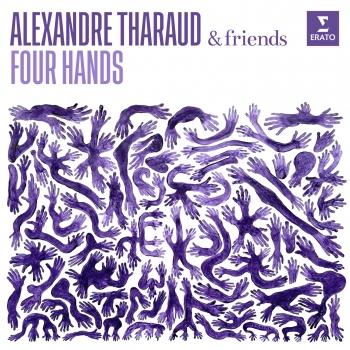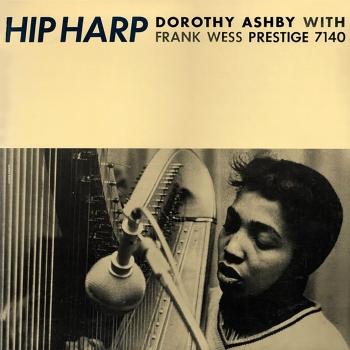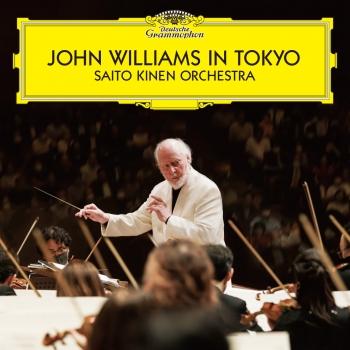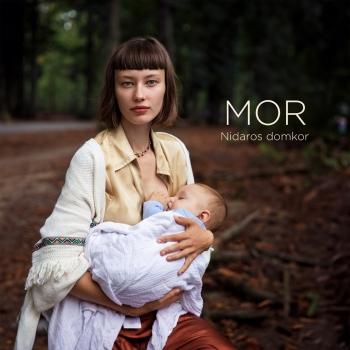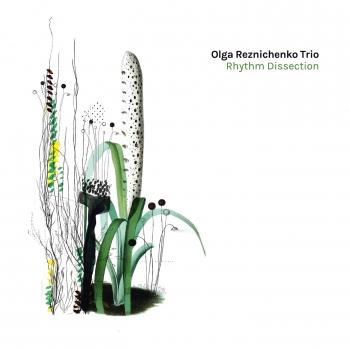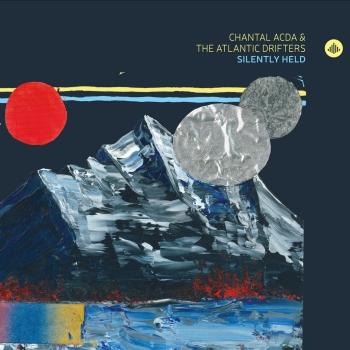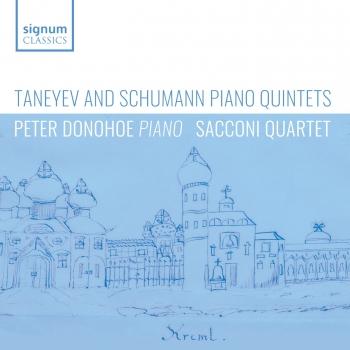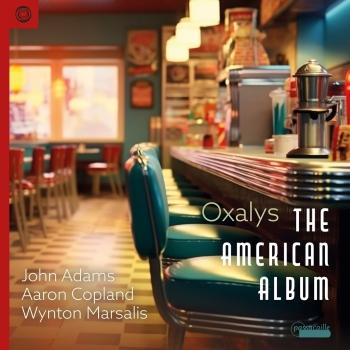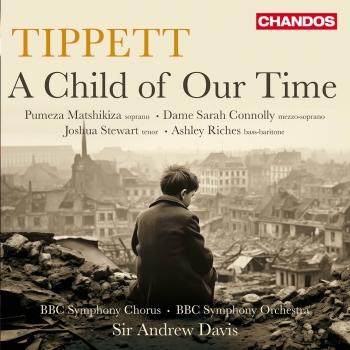
Rautavaara: Modificata / Incantations / Towards the horizon Helsinki Philharmonic Orchestra & John Storgårds
Album info
Album-Release:
2012
HRA-Release:
09.07.2012
Label: Ondine
Genre: Classical
Subgenre: Orchestral
Artist: Helsinki Philharmonic Orchestra & John Storgårds
Composer: Einojuhani Rautavaara
Album including Album cover Booklet (PDF)
- 1I. Theme04:06
- 2II. Variations of the theme08:38
- 3III. Finale08:32
- 4I. Praevariata09:00
- 5II. Meditatio04:52
- 6III. Affectio03:24
- 7I. Pesante08:09
- 8II. Espressivo08:52
- 9III. Animato (cadenza by C. Currie)06:43
Info for Rautavaara: Modificata / Incantations / Towards the horizon
These world première recordings combine Einojuhani Rautavaara's latest two concertos with an orchestral piece from his early Modernist period (Modificata; 1957/2003).
The virtuoso Percussion Concerto Incantations (2008) features percussion soloist Colin Currie, who is the dedicatee and première performer of this work. Currie wrote himself the virtuoso cadenza to the final movement. Rautavaara's Second Cello Concerto Towards the Horizon (2009) was written for cellist Truls Mørk and plays continuously in one 20-minute movement. Reviewing the première performance the Star Tribune noted that the composer 'acknowledges a ‘taste for eternity' and a vain of mysticsm runs through his work.'
Einojuhani Rautavaara is recognized as one of the most notable Finnish composers after Jean Sibelius. His recordings on Ondine have been bestsellers and garnered numerous awards (including a recent GRAMMY nomination for his opera Kaivos).
'Rautavaara’s late works continue to reveal the hand of a master with a completely assured technique and a serenely confident personal style. Towards the Horizon, his Cello Concerto No. 2, is an introspective, poetic work cast in large-scale variation form. Like so many modern concertos, its quiet ending may limit its chances of becoming popular in concert, but the quality of the music is never in doubt and the melodic material is truly memorable. Rautavaara’s Percussion Concerto, subtitled “Incantations,” opens with an arresting chorale that returns both at the end of the first movement (sound sample below), and in the work’s final pages. I have often said that percussion concertos, conceptually speaking, are almost impossible to write because of the inherent limitations of the solo instrument(s), especially if (as here) the composer’s style is essentially tonal and melodic. To his credit, Rautavaara apportions the majority of the solo writing to vibraphone and marimba, with contrasting episodes given to untuned percussion. The result, effectively varied timbrally, works very well; even the concluding cadenza fits logically into its place in the finale, and does not outstay its welcome. Time will tell if “the percussion concerto problem,” if you accept that there is one, has been solved definitively. Either way, this is a very enjoyable listen.
Modificata belongs to Rautavaara’s early, twelve-tone period (the late 1950s) and while it’s understandable that he takes pride in some of these early pieces, there is no point in pretending that they are as characterful or successful as his later works. Even here, though, Rautavaara fashions distinctive melodic material for each of the piece’s three movements–the quick finale is particularly exciting and successful. The first movement seems to owe a little something to the first of Berg’s Three Pieces for Orchestra, but especially in this context, it would be difficult to make the case for this music being as expressive and interesting as the two concertos. Still, it’s good to have this audible measure of the distance that Rautavaara has travelled over the course of his career. As with all the releases in Ondine’s ongoing series dedicated to this composer, the performances are excellent. Both concertos are performed by their dedicatees, while the Helsinki Philharmonic under John Storgards does its usual fine job. So, for that matter, do Ondine’s engineers. Very recommendable.' (ClassicsToday.com)
Truls Mørk, cello
Colin Currie, percussion
Helsinki Philharmonic Orchestra
John Storgårds, conductor
Truls Mørk’s
reputation as a cellist of fierce intensity and grace has been built on performances throughout the world. He is a celebrated artist who performs with the most distinguished orchestras, including the Berlin and Munich Philharmonics, Royal Concertgebouw, Philharmonia orchestra, orchestre de Paris, staatskapelle dresden, symphonieorchester des Bayerischen Rundfunks, and Wiener symphoniker. In north America he has worked with the orchestras of Boston, los Angeles, new York Philharmonic, Chicago, and Cleveland, among others.
Truls Mørk is a committed performer of contemporary music who has championed the cello concertos of Henri dutilleux, Pavel Haas, Hafliði Hallgrimsson, John McCabe, krzysztof Penderecki, Matthias Pintscher, Einojuhani Rautavaara, and lasse Thoresen. He has made numerous recordings, mostly for Virgin Classics. In 2002, he received a grammy Award for his Britten Cello suites, and 2011 an ECHo klassik Award for his C.P.E. Bach Concerti. His most recent recording for ondine was Hafliði Hallgrimsson’s works for cello and orchestra.
His most recent awards include the sibelius Prize 2011 and the norwegian Critics’ Prize 2011.
Colin Currie
has been the driving force behind new percussion repertoire for more than a decade. Acclaimed for his virtuosity and musical integrity, Currie is a solo and chamber artist at the peak of his powers renowned for championing new music at the highest level. Currie is soloist with many of the world’s leading orchestras, including the Concertgebouw orchestra, Philadelphia orchestra, los Angeles Philharmonic, Philharmonia orchestra, and london Philharmonic.
From his earliest years Currie forged a pioneering path in creating new music for percussion, and his “athletic percussionism, compulsive showmanship, and deep musicality” (The Guardian) has inspired composers from around the globe. He was awarded the Royal Philharmonic society Young Artist Award in 2000 for his inspirational role in contemporary music-making, and since then has commissioned and premiered works by composers including simon Holt, kurt schwertsik, Einojuhani Rautavaara, Alexander goehr, Elliott Carter, steve Reich, James MacMillan, and louis Andriessen. His Cd recording of Jennifer Higdon’s Percussion Concerto conducted by Marin Alsop on the london Philharmonic orchestra label, won a 2010 grammy Award.
John Storgårds
is one of Finland’s exceptional artists who have taken the classical music world by storm in recent decades. He has a dual career as a conductor and violin virtuoso and is widely recognised for his creative flair for programming and his commitment to contemporary music. since 2008, storgårds has been Chief Conductor of the Helsinki Philharmonic orchestra. He additionally holds the titles of Artistic director of the Chamber orchestra of lapland since 1996 and Principal guest Conductor of BBC Philharmonic orchestra since 2012.
Storgårds appears with such orchestras as BBC symphony, City of Birmingham symphony, swedish Radio symphony, oslo Philharmonic, danish national symphony, Bamberger symphoniker, orchestre Philharmonique de Radio France, netherlands Radio, and orchestra sinfonica nazionale della RAI Torino. Further afield, storgårds has conducted the sydney, Melbourne, and Australian Chamber orchestras, and the Boston symphony at Tanglewood Festival. soloists with whom he regularly collaborates include gil shaham, Christian Tetzlaff, Frank Peter Zimmermann, Truls Mørk, Jean-Yves Thibaudet, Colin Currie, Håkan Hardenberger, sabine Meyer, kari kriikku, karita Mattila, and Matti salminen.
After starting a career as a world-class violinist, John storgårds returned to the sibelius Academy from 1993–97 to study conducting with Jorma Panula and Eri klas. His recordings for ondine include works by John Corigliano, Hafliði Hallgrímsson, uuno klami, Pehr Henrik nordgren, Andrzej Panufnik, kaija saariaho, Jean sibelius, Jukka Tiensuu, and Pēteris Vasks (Cannes Classical disc of the Year Award 2004 for the Violin Concerto ‘distant light’). In 2002, he received the Finnish state Prize for Music.
Helsinki Philharmonic Orchestra
The oldest professional symphony orchestra in the nordic countries was founded as the Helsinki orchestral society by the young Robert kajanus, its first Chief Conductor, in 1882. Well known today for its tradition of performing sibelius, the helsinki Philharmonic orchestra gave the first performances of many of sibelius’s major works, often with the composer himself conducting. The orchestra undertook its first foreign tour to the universal Exposition in Paris in 1900 and since then has visited most European countries, in addition to visiting the usA, south America, Japan, and China. since 2008, John storgårds has been the orchestra’s Chief Conductor, succeeding leif segerstam who received the title of Emeritus Chief Conductor. The list of previous chief conductors also includes Paavo Berglund and okko kamu. A new era started in August 2011, when the orchestra moved its permanent residency from the Finlandia Hall to the new Helsinki Music Centre. The Helsinki Philharmonic orchestra and ondine have maintained a long-standing exclusive partnership involving for example an edition of the complete sibelius symphonies under the direction of leif segerstam, as well as numerous recordings of works by Einojuhani Rautavaara.
Einojuhani Rautavaara - Composer
(b. 1928) has often said, modifying a well-known quote: “A young composer who is not a Modernist has no heart; an old composer who is a Modernist has no head.” He has practiced what he preaches: his extensive output traces a beautiful arc from the combative experimentalism of youth to the serene wisdom of old age.
Rautavaara’s earliest works, dating from the late 1940s and early 1950s, are couched in neo- Classicism, the then mainstream style in Finnish concert music. In the 1950s, his idiom began to acquire a sharper edge with his transition to a more Modernist style, including the adoption of twelve-tone technique. one of the first manifestations of this in his output was the orchestral work Modificata (1957). Moving on from dodecaphony and serialism, he sought a different approach in the 1960s and eventually ended up with a synthetic style that could be described as neo-Romantic, the idiom of his late works. His percussion concerto Incantations (2008) and second cello concerto Towards the Horizon (2009) are fine examples of this period.
Works from different times and in different styles. In Modificata we hear a rationalist, in the two concertos we hear a mystic. But even though it is possible to point to clearly defined stylistic periods in Rautavaara’s work, his personality inseparably binds together everything he has ever written. His personal voice is a stronger element than any stylistic features; the rationalist and the mystic are simply different aspects of the same persona.

